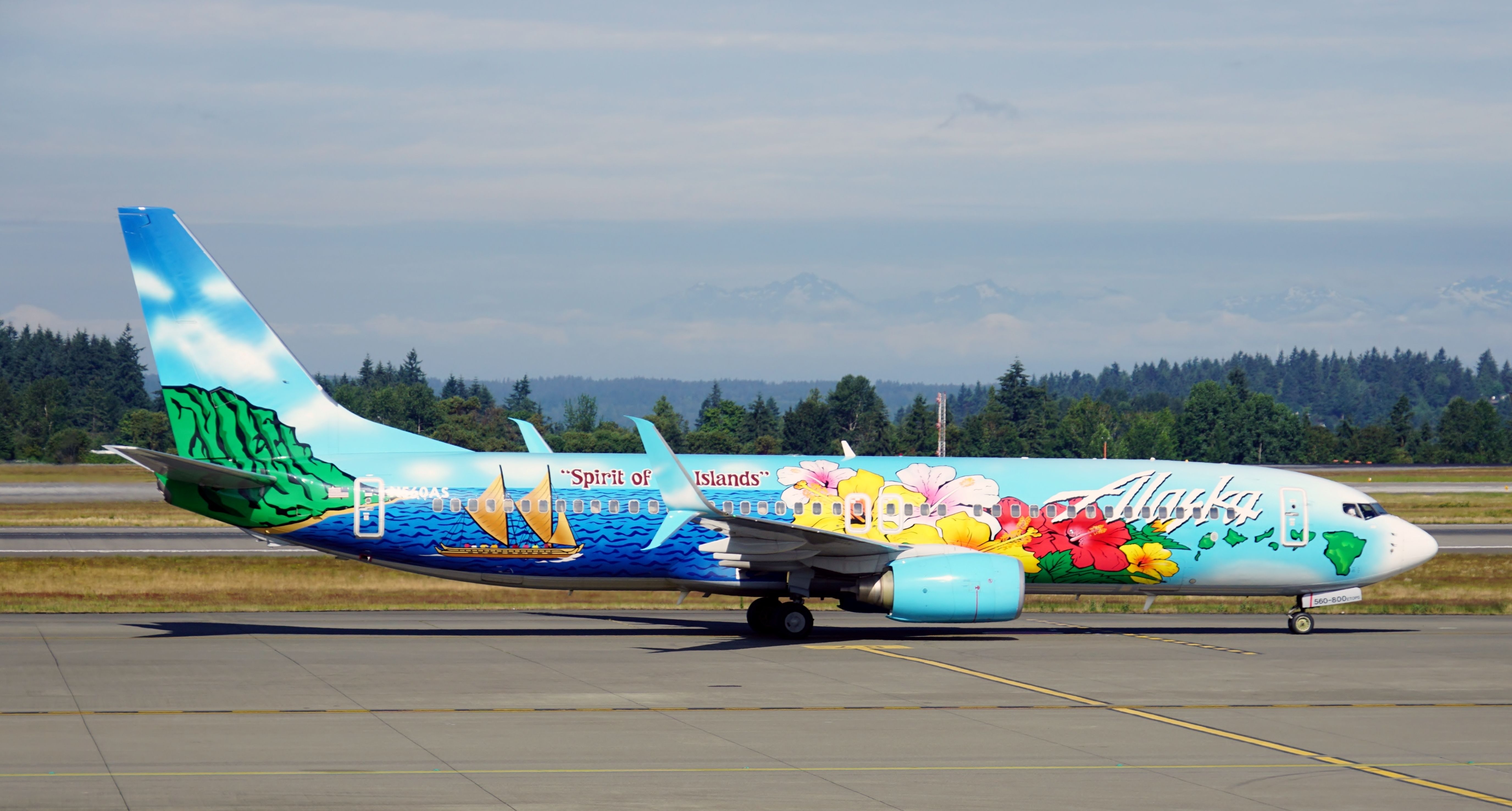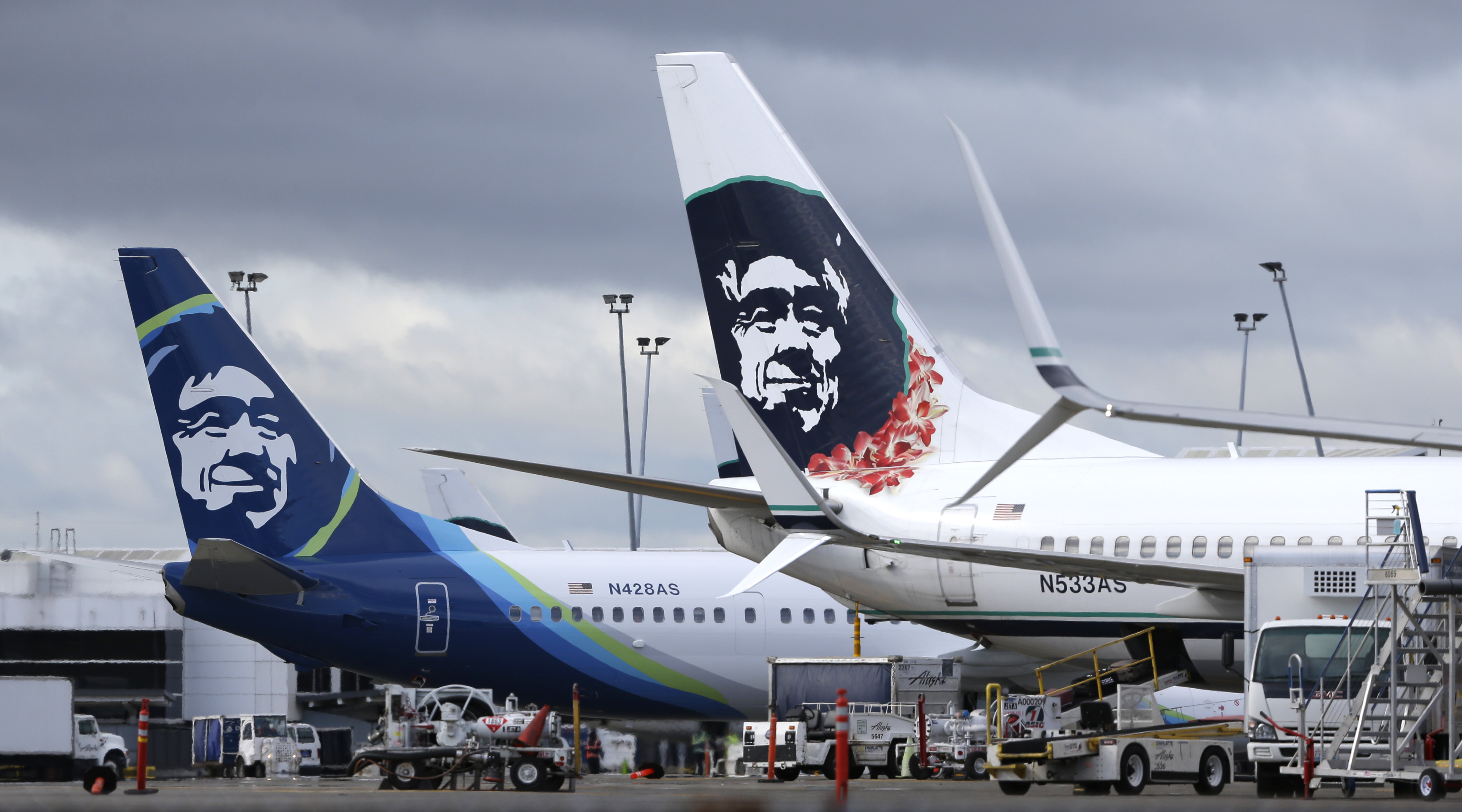Hawaiian Airlines and Alaska Airlines: A Comparative Analysis

Hawaiian Airlines and Alaska Airlines are prominent carriers in the United States, each catering to a distinct clientele and market segment. This analysis delves into their operational characteristics, highlighting key differences and similarities, and ultimately aiding travelers in making informed choices.
Route Networks
Hawaiian Airlines and Alaska Airlines exhibit distinct route network strategies, reflecting their target markets and geographical focus.
Hawaiian Airlines primarily serves destinations within the Hawaiian Islands, offering extensive connections between the major islands. The airline also operates international flights to destinations in Asia, Oceania, and North America, primarily from its hub at Honolulu International Airport (HNL).
Alaska Airlines, on the other hand, focuses on the West Coast of the United States, with a strong presence in Alaska, California, Oregon, and Washington. The airline also serves destinations in Mexico, Canada, and the Caribbean. Its primary hubs are located in Seattle-Tacoma International Airport (SEA), Anchorage International Airport (ANC), and Portland International Airport (PDX).
While both airlines offer connections to various destinations, Hawaiian Airlines stands out for its focus on the Hawaiian Islands, while Alaska Airlines emphasizes the West Coast and Alaska.
Customer Service Experiences
Customer service experiences vary across airlines, with factors like baggage policies, in-flight amenities, and online booking processes playing significant roles.
Hawaiian Airlines offers a generous baggage allowance, permitting two checked bags per passenger. In-flight amenities include complimentary meals and beverages, along with entertainment options such as movies, TV shows, and music. The airline’s online booking process is user-friendly and provides a seamless experience.
Alaska Airlines allows one checked bag per passenger free of charge, with additional baggage fees applicable. In-flight amenities include complimentary snacks and beverages, along with a selection of entertainment options. The airline’s online booking platform is intuitive and offers various features, including seat selection and baggage pre-payment.
While both airlines provide adequate customer service experiences, Hawaiian Airlines stands out with its more generous baggage allowance and complimentary meals, while Alaska Airlines excels in its online booking platform and user-friendly features.
Loyalty Programs, Hawaiian airlines alaska
Loyalty programs are crucial for airlines, offering incentives to frequent flyers and promoting customer retention.
Hawaiian Airlines operates the HawaiianMiles program, offering benefits like free flights, upgrades, and other perks. Members earn miles based on their travel activity and can redeem them for awards, including flights, upgrades, and merchandise. The program also features elite tiers, providing additional benefits for frequent travelers.
Alaska Airlines operates the Mileage Plan program, which allows members to earn miles for flights, car rentals, and other activities. Miles can be redeemed for flights, upgrades, and merchandise. The program also offers elite tiers, with varying benefits depending on the tier level.
Both loyalty programs provide value to frequent travelers, offering rewards and benefits that enhance the travel experience. HawaiianMiles stands out for its focus on Hawaiian-themed rewards, while Mileage Plan offers a wider range of redemption options, including partner airlines.
Frequent Flyer Program Comparison
| Feature | HawaiianMiles | Mileage Plan |
|—|—|—|
| Earning Miles | Flights, Hotel Stays, Car Rentals | Flights, Car Rentals, Hotel Stays, Credit Card Spending |
| Redemption Options | Flights, Upgrades, Merchandise | Flights, Upgrades, Merchandise, Partner Airlines |
| Elite Tiers | Gold, Platinum | MVP, MVP Gold, MVP Gold 75K |
| Benefits | Priority Check-in, Free Baggage, Lounge Access | Priority Check-in, Free Baggage, Lounge Access, Companion Fare |
| Overall Value | Good for Frequent Hawaiian Travelers | Good for Frequent Travelers on Alaska and Partner Airlines |
Market Positioning and Target Audiences: Hawaiian Airlines Alaska

Hawaiian Airlines and Alaska Airlines have distinct market positions and target audiences, reflecting their unique operating environments and strategic objectives. These airlines cater to specific traveler demographics, travel preferences, and spending habits, which inform their marketing strategies and competitive landscapes.
Target Audience Demographics and Preferences
Hawaiian Airlines and Alaska Airlines cater to distinct target audiences, shaped by their geographic locations and service offerings.
- Hawaiian Airlines: Primarily targets leisure travelers seeking a tropical getaway, with a focus on the Hawaiian Islands. Its target audience includes families, couples, and individuals seeking relaxation, cultural experiences, and outdoor activities. The airline also attracts business travelers, particularly those with connections to Hawaii.
- Alaska Airlines: Appeals to a broader audience, encompassing both leisure and business travelers. Its target audience includes families, couples, individuals, and business professionals, with a focus on destinations in the Western United States, Alaska, and Mexico. Alaska Airlines’ target audience is known for its value consciousness and appreciation for efficient service.
Marketing Strategies
Both airlines employ tailored marketing strategies to reach their respective target audiences.
- Hawaiian Airlines: Leverages its brand identity, which emphasizes the Hawaiian culture, hospitality, and natural beauty. The airline uses vibrant imagery, traditional Hawaiian music, and partnerships with local businesses to evoke a sense of destination and escape. Hawaiian Airlines also utilizes targeted advertising, social media campaigns, and influencer marketing to reach its desired audience.
- Alaska Airlines: Emphasizes its reliability, affordability, and customer service. The airline uses a straightforward and informative approach in its marketing materials, highlighting its network of destinations and loyalty program benefits. Alaska Airlines also utilizes targeted advertising, social media campaigns, and partnerships with local organizations to reach its desired audience.
Competitive Landscape
Both airlines face competition from a range of carriers, including legacy airlines, low-cost carriers, and regional airlines.
- Hawaiian Airlines: Faces competition from Southwest Airlines, United Airlines, and Delta Air Lines in the Hawaiian market. These competitors often offer competitive fares and frequent flyer programs to attract passengers.
- Alaska Airlines: Faces competition from Southwest Airlines, United Airlines, Delta Air Lines, and Frontier Airlines in its primary markets. These competitors often offer competitive fares, frequent flyer programs, and a focus on customer experience.
Successful Marketing Campaigns
Both airlines have launched successful marketing campaigns that have resonated with their target audiences.
- Hawaiian Airlines: The “Aloha Spirit” campaign, which emphasizes the airline’s connection to Hawaiian culture and hospitality, has been successful in attracting leisure travelers. The campaign uses vibrant imagery, traditional Hawaiian music, and testimonials from satisfied customers to evoke a sense of destination and escape.
- Alaska Airlines: The “Alaska Airlines Mileage Plan” campaign, which highlights the airline’s frequent flyer program, has been successful in attracting loyal customers. The campaign uses a straightforward and informative approach, emphasizing the program’s benefits and value proposition.
Financial Performance and Future Outlook

This section examines the financial performance of Hawaiian Airlines and Alaska Airlines, exploring key metrics such as revenue, profitability, and market share. It also delves into the growth strategies employed by each airline, encompassing fleet expansion, route network development, and strategic partnerships. Furthermore, it identifies potential challenges and opportunities that both airlines may encounter in the future, considering industry trends, economic conditions, and competitive pressures. Finally, it provides a brief outlook for the future of both airlines, taking into account their current trajectory and industry trends.
Financial Performance
- Revenue: Hawaiian Airlines and Alaska Airlines have both experienced significant revenue growth in recent years, driven by strong demand for air travel, particularly in their respective regions. Hawaiian Airlines, known for its focus on the Hawaiian Islands, has benefited from the popularity of leisure travel to the state. Alaska Airlines, serving a vast network in the western United States and Canada, has capitalized on the growing demand for air travel in the region.
- Profitability: Both airlines have demonstrated strong profitability, with Hawaiian Airlines consistently exceeding the industry average in terms of operating margin. Alaska Airlines, known for its cost-efficient operations, has also achieved healthy profit margins. This strong financial performance reflects their effective strategies, efficient operations, and strong demand in their respective markets.
- Market Share: Hawaiian Airlines holds a dominant market share in the Hawaiian Islands, with over 80% of the market. Alaska Airlines is a major player in the western United States and Canada, with a significant market share in key markets such as Seattle, Portland, and Anchorage. These strong market positions provide both airlines with a solid foundation for future growth.
Growth Strategies
- Fleet Expansion: Both airlines have invested in modernizing and expanding their fleets to support growth. Hawaiian Airlines has added new Airbus A321neo and Boeing 787-9 aircraft, offering enhanced passenger comfort and fuel efficiency. Alaska Airlines has also expanded its fleet with new Boeing 737 MAX aircraft, increasing capacity and improving operational efficiency.
- Route Network Development: Hawaiian Airlines has expanded its route network to include new destinations in Asia and the mainland United States, catering to growing demand from international and domestic travelers. Alaska Airlines has also expanded its route network, adding new destinations in the western United States and Canada, while also increasing frequencies on existing routes.
- Partnerships: Both airlines have established strategic partnerships to enhance their offerings and reach new markets. Hawaiian Airlines has a codeshare agreement with Japan Airlines, expanding its reach in Asia. Alaska Airlines has a partnership with Virgin America, providing access to a wider network and customer base.
Challenges and Opportunities
- Industry Trends: The airline industry faces numerous challenges, including volatile fuel prices, increasing competition, and economic uncertainty. Both Hawaiian Airlines and Alaska Airlines are actively managing these challenges by focusing on cost efficiency, innovation, and customer service. The industry is also witnessing a shift towards sustainable practices, and both airlines are investing in fuel-efficient aircraft and other initiatives to reduce their environmental footprint.
- Economic Conditions: Economic conditions can significantly impact air travel demand. Both airlines are closely monitoring economic trends and adjusting their operations to navigate potential fluctuations. They are also focusing on attracting value-conscious travelers by offering competitive fares and attractive packages.
- Competition: The airline industry is highly competitive, with both legacy carriers and low-cost carriers vying for market share. Hawaiian Airlines faces competition from other airlines serving the Hawaiian Islands, while Alaska Airlines competes with other carriers in the western United States and Canada. Both airlines are focusing on differentiating themselves through their unique offerings, such as their focus on customer service, their extensive route networks, and their commitment to sustainability.
Future Outlook
- Hawaiian Airlines: Hawaiian Airlines is well-positioned for continued growth, with a strong brand, a dominant market share, and a growing international presence. The airline’s focus on the Hawaiian Islands, a popular tourist destination, provides a stable foundation for future growth. However, the airline must navigate the challenges of increasing competition and economic uncertainty.
- Alaska Airlines: Alaska Airlines is also expected to continue its growth trajectory, leveraging its extensive route network, its cost-efficient operations, and its focus on customer service. The airline’s expansion into new markets and its strategic partnerships provide opportunities for future growth. However, the airline must manage the challenges of volatile fuel prices and increasing competition.
Hawaiian airlines alaska – Hawaiian Airlines and Alaska Airlines, while vying for dominance in the Pacific, both offer routes to the alluring Kona Island, a paradise where volcanic landscapes meet pristine beaches. The allure of Kona Island is undeniable, but it’s the competition between these airlines that truly fuels the market, leaving travelers with the ultimate decision: which airline offers the most enticing deals and the smoothest journey to this volcanic Eden?
Hawaiian Airlines and Alaska Airlines have long been rivals in the Pacific Northwest, vying for dominance in the lucrative Seattle market. But while Hawaiian Airlines focuses on its namesake islands, Alaska Airlines has expanded its reach to include the Aloha State, offering a more direct route to paradise.
This move by Alaska Airlines, however, could be seen as a calculated attempt to undercut Hawaiian Airlines’ stronghold on the Hawaiian market, further intensifying the competition between these two major airlines. alaska airlines hawaii It remains to be seen whether Hawaiian Airlines will be able to maintain its dominance in the face of this new challenge, or if Alaska Airlines will ultimately prevail in this battle for air travel supremacy.
